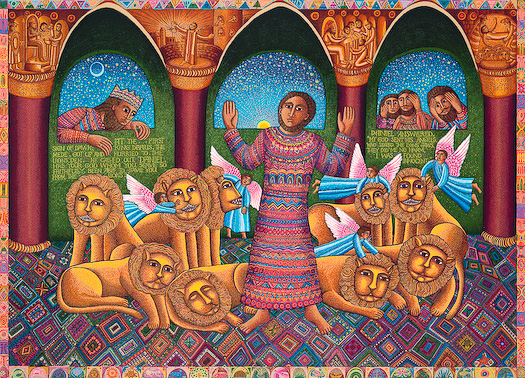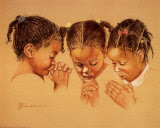What could still be said about the PLAY, THE LION KING?
Since 1997 it has been onstage and today in many many countries performances are made even in different languages.
Anyway it is a must see for the Filipino people because of its beauty, the lessons it imparts to artists of all genres, and being a truly aesthetically educational yet entertaining play.
Anyway it is a must see for the Filipino people because of its beauty, the lessons it imparts to artists of all genres, and being a truly aesthetically educational yet entertaining play.
1.Who should say what is beautiful and what is not? Is beauty relative? Not really. If the Lion King were to be presented by a Filipino, would it be less beautiful than what Disney has made? Beauty here would have specificities. For example, we don’t have hyenas nor giraffes, except those in the zoo. Neither do we have tigers or lions, but our zoos have. Ergo, the beauty of animals which play major roles in the play, will undergo redefinitions.
2.There are commonalities, though between our experiences and those to be found in he play.
a.For example, sidekicks, those who act as valets or servants of the king, can be found in our milieu.
b.Political conspirators also abound.
c. One thing we don’t have is the aristocratic setup, wherein families rule, except the ought-to-be maligned dynastic rules which legitimize their existence through electoral manipulation. Lion King is thru and thru a play about royalties, ascension into power and descension into disempowerment.
d. Another commonality is the presence of communities which stand together through thick and thin. Lion King presents to us the kingdom of Simba’s father which is tightly-knit, but crumbles under the vicious intrusion of his power-hungry uncle.
Incidentally this reminds me of Hamlet, whose father is killed by his uncle who then grabs power. And Hamlet returns to unravel the conspiracy.
e. Still another is our belief that the departed still exercise influence on the lives of those left behind. Hence, Simba’s father reminds him of his duties as the leader of the lion tribe. But later on, Simba exhibits a different kind of attitude. He sings: “I can’t wait to be king” thereby showing a primary and different view of kingship or leadership, not as a tool for service to the people. It sounds more like a hankering for sheer power, fame, and strength. Here are the major lyrics of the song:
I Just Can't Wait to Be King by Rowan Atkinson, Jason Weaver, ... I'm gonna be a mighty king
So enemies beware
I'm gonna be the main event
Like no king was before
I'm brushing up on looking down
I'm working on my roar Oh, I just can't wait to be king
No one saying, "do this"
No one saying, "be there"
No one saying, "stop that"
No one saying, "see here"
Free to run around all day
Well, that's definitely out
Free to do it all my way
This inheritance of leadership within the family is not only African but also very Asian and that older generations of leaders still exercise power over their descendants. This belief could be found among the Indian, Chinese, Korean, Indonesian and many other Asiatic cultures like our tribes. We like to embrace the idea that our lives do not end on earth but go on to the next world. Spiritually we are connected not only here but beyond.
f. The multiple colors that are used in the creation of the puppets are definitely African and Asian as well. We imbibe the colors of our surroundings and project them in our visual products.
But the special artistic mark is there when the shapes and lines of the puppets are defined by the artist herself, the woman director, puppet maker and co-lyricist of Elton John and Tim Rice, Julie Taymour. The shapes of the animals are stylized, not naturalistic. Also the artistic designs made use of many geometric shapes which are trademarks of African art.
g. The music though is a hodgepodge of African chants, rock, jazz, ethnic and ballad. They are very captivating. Also the use of African language in writing lyrics is very unique and surprising for me much as I am used to hearing Broadway plays in English all or most of the time.
Then the African speaker of English with local accent is well done; the director had chosen an actor withput a very western accent. I think that is a recognition of the different individual rearings of English speakers. We may speak English but use our own local accents. However, Simba and his father have opposite accents. I wonder why. Haha.
3.Unique Artistry a. In terms of artistry, I take my hat off to the execution of the animal puppets and their use of the puppeteers who manipulated them very professionally. That seems to be based on the Japanese puppetry Bunraku which have puppeteers dressed in all black and their faces covered with veil while they hold the puppets in colorful attire and make them the center of attention. In Lion King, the puppeteers presence is very much marked. They intrude into the story of the play, unlike Japanese puppet play productions.
b. Spectacle Actually, the presentation had many spectacular techniques that appealed to the curiosity of the young audience and mine. It had geysers that spurt vapor here and there without any warnings. At most of the openings of the scenes, the puppets were shadows crossing the stage and then later the full lights would reveal all their colors. Then the presentation also made use of pinhole lighting inside of which revealed animals crossing across a black curtain. That was really ingenious.
A stage box had a staircase which could stand for the throne, or the highest peak of the mountain where the whole lion’s kingdom could be viewed. It was also the last setting where the grown Simba and his uncle would finally square off.
The shape of the curtain is not square or rectangle but inverted 45 degree triangle with jagged hems.
Slip ups:
Here are some problems which somehow were disturbing for the audience found 100 feet above – in the balcony. That’s what I can afford, Folks.
1.When the actors spoke it took us a bit of time to find out who was speaking. The sound was thrown to the whole theatre and so our eyes had to wander from actor to actor trying to discover who is talking.
2.Simba the child, has too much western accent which did not match that of his father’s as I have said before.
3. Also, the colors of the costumes of the major actors blended too well with those of the other actors. They did not have that feature which made them float above the sea of colors. Hence, again, sifting through the number of people onstage became quite difficult.
4.Then the voice of the adult Simba sounded too weak vis-à-vis his uncle’s. Hence it didn’t seem credible for him to be able to defeat him. Actually, I think that the uncle’s voice should have been aged since many years have passed since he had talked to Simba.
This is a play that should be watched by everyone in any kind of governance. Surely, they would be able to pick which animal exhibits the character of his boss or underling. Hence, I told some Barangay employees in Pasay City to write the secretary of DILG to give them free tickets to the show or write the pay producers to give them discounted tickets so that they could watch it and thereby raise their cultural consciousness on political conflicts in governance.
Also, they could learn a lot in terms of the accomplishments of the director of the play, Julie Taymour, whom I would call the lioness director.
Also, they could learn a lot in terms of the accomplishments of the director of the play, Julie Taymour, whom I would call the lioness director.
Ay but here’s the rub –getting out of Solaire is a great tribulation. The taxi drivers there do not pick up passengers who are not Chinese or Chinese-looking.
“Kasi naloloko nila,” a guard had told me. They are able to pay a huge sum for the transport. Finally the guard was able to get one for me after I had told him to tell the driver where I was going – to Makati Medical Center.
“Kasi naloloko nila,” a guard had told me. They are able to pay a huge sum for the transport. Finally the guard was able to get one for me after I had told him to tell the driver where I was going – to Makati Medical Center.
Quoted: Julie Taymor (born December 15, 1952) is an American director of theater, opera and film. She is best known for directing the stage musical The Lion King, for which she became the first woman to win the Tony Award for directing a musical, in addition to a Tony Award for Original Costume Design.
She has also received the Drama Desk Award for Outstanding Costume Design, an Emmy Award, and an Academy Award nomination for Original Song. She also received the 2012 Director Award for Vision and Courage from the Athena Film Festival at Barnard College in New York City.[1] She was the director of the Broadway musical Spider-Man: Turn Off the Dark and an off-Broadway production of A Midsummer Night's Dream.
John August Swanson HAND-PRINTED SERIGRAPHS
Daniel
John August Swanson's serigraph Daniel portrays the story of Daniel in the Lion's Den from Daniel 6. Daniel is sentenced to a terrifying death, yet he stands quietly in the midst of the wild lions. John reflects that, "This story still inspires us by its hopeful message. It connects us to those who confront the powers in our world that keep people oppressed, the people who "speak truth to power." It is an optimistic story where good wins and hope is kept alive. Despite seemingly impossible situations, by keeping our faith alive we can survive our "lion's den"."
2000 | Edition of 220 | 35 Color Stencils
Image Size: 21" x 30"
Paper Size: 29" x 38"
Paper: 100% cotton rag, acid free
https://www.eyekons.com/john_swanson_serigraphs/john_swanson_daniel_s








No comments:
Post a Comment